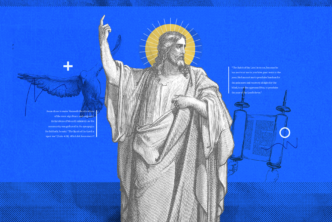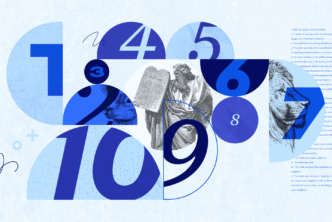Despite popular belief, Saul did not become Paul on the road to Damascus. Those are simply two versions of the same name: Saul the Hebrew version, Paul the Roman.
However, what did change when Christ appeared to Paul—and it’s perhaps the most overlooked part of the story—was Paul’s eschatology.
In Paul’s encounter with Christ, he saw the end breaking into the present. In fact, Matthew Aernie and Donald Hartley, authors of The Righteous & Merciful Judge, suggest that for Paul, his vision was nothing less than “a day of the Lord.”
What is “a day of the Lord”?
“Day of the Lord” terminology is grounded in the Old Testament.
A day of the Lord is an event when he comes in righteous and merciful judgment. While the prophets referred to many “days of the Lord,” in their near future, these all foreshadowed one climactic and final “Day.” Historic and localized events in Israel’s history such as famine, war, and exile all predicted the ultimate Day.
In this climactic Day of the Lord, he will visit the world to vindicate his people, judge the nations, and establish his kingdom of peace (e.g. Isa 13:6; Joel 2:1; Joel 3:14; Micah 4:1–13) through a Davidic king (e.g. Isa 9:1–7; 11:1–16; Jer 23:5–6; Ezek 34:23–24).
Paul’s own day of the Lord experience
Aernie and Hartley suggest that Paul’s experience of the glorified Christ on the Damascus road is in fact “a proleptic day of the Lord” (p. 88, italics in original). That is, Paul had a foretaste of the final Day on the Damascus road. How was his encounter with Jesus connected to the Day of the Lord?
First, Paul experienced a Christophany. That is, the risen Christ revealed himself to Paul (Gal 1:16; 1 Cor 15:5–8; Acts 9:17) in a way analogous to OT Theopanies of the LORD. However, rather than the appearance of the LORD, this was the appearance of Jesus.
Second, Paul recognized that the day of the Lord would be “fulfilled in Jesus” (p. 91). If the hopes and expectations of the OT prophets found their expression through the Messiah—and the Messiah had indeed come—then Jesus is the focus of the coming Day.
Third, by recognizing the Messiah had come, Paul realized that God has “inaugurated the end of the age” (p. 93; see 1 Cor 7:29–31). God’s saving promises have begun in the coming of Jesus. What’s more, Jesus’ first coming proves that the Day is all the more imminent.
Fourth, Paul was commissioned to preach. Paul’s experience was analogous to OT prophetic callings. Compare Jeremiah 1:5 and Galatians 1:15–16 (emphasis added):
Before I formed you in the womb I knew you, and before you were born I consecrated you; I appointed you a prophet to the nations. (Jeremiah 1:5)
But when he who had set me apart before I was born, and who called me by his grace, was pleased to reveal his Son to me, in order that I might preach him among the Gentiles, I did not immediately consult with anyone (Galatians 1:15-16)
As the prophets responded to God’s call by proclaiming the word of the Lord, so too Paul preached the gospel of Christ. As the prophets warned of the coming day of the Lord, so too Paul warned of the coming of Christ.
Fifth, Paul’s experience was forensic. That is, the coming Judge revealed himself to Paul. However, “instead of retribution, the Judge gave Paul mercy, making him a new creature and commissioning him as the apostle to the gentles” (p. 91). Thus, Paul preached a message of grace that he had himself received.
The theological importance of Paul’s experience of Jesus on the Damascus road cannot be understated. When Paul encountered Jesus, he personally met the coming Judge and experienced a foretaste of the imminent Day of the Lord. It’s no surprise that this resulted in the day of the Lord becoming “one of the primary components of Paul’s theological matrix” (p. 93).
***
This post is based on chapter 4 in The Righteous & Merciful Judge by Matthew Aernie and Donald Hartley, part of the Studies in Scripture and Biblical Theology series from Lexham Press.
Guest writer Lindsay John Kennedy, an Aussie/Brit living in USA, is a card-carrying Bible nerd who serves at Imprint Church and blogs at My Digital Seminary.





